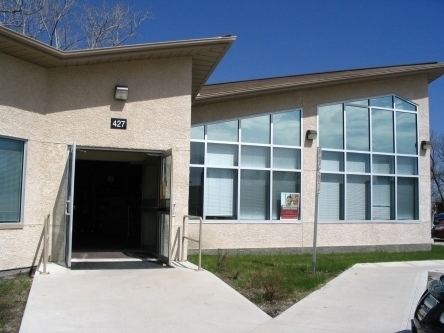Country Canada Founded 1877 Time zone CST (UTC-6) Area 2.6 km² Population 1,100 (2011) Local time Friday 7:23 AM | Region Eastman Incorporated January 4, 1947 Website Official website Elevation 242 m | |
 | ||
Weather 3°C, Wind NW at 6 km/h, 89% Humidity | ||
St-Pierre-Jolys (formerly Rivière-aux-Rats/Rat River, St-Pierre/St. Pierre), pop. 1099, is a village 50 km SSE of Winnipeg on Highway 59 near the Rat River, in the Canadian province of Manitoba. It is surrounded by the Rural Municipality of De Salaberry. The nearest communities are Steinbach, St. Malo, Morris and Niverville.
Contents
Map of St-Pierre-Jolys, MB, Canada
Agriculture is the dominant industry: primarily dairy farming and livestock. Being important sectors for the life of the community, the local businesses, services, and hospitality are strong.
Tourism is also important to the village: the former Crow Wing Trail is now part of the Trans-Canada Trail, and St. Pierre-Jolys hosts several popular festivals, such as la Cabane à Sucre (maple syrup festival) in April; le Festival Chantecler, a celebration of Francophone arts; and the signature St-Pierre-Jolys Frog Follies and Ag Fair (les Folies Grenouilles et Foire Agricoles), a village fair featuring the Canadian frog jumping competition.
There are 3 schools, a hospital, and a sizable Royal Canadian Mounted Police detachment in the village.
Bilingual St-Pierre-Jolys has collaborated with nearby St. Malo on several ventures, including a trade show and a hockey league.
The dramatic sequences for the 2012 documentary We Were Children were shot there.
History
Part of the 19th-century Crow Wing Trail linking Upper Fort Garry with St. Paul (now MN), the area was initially settled by French speaking people, including Métis and Québécois. English settlers later came as well, in smaller numbers. Father Noel-Joseph Ritchot and Mr. Joseph Dubuc both helped with St. Pierre's founding. The Breton-born Father Jean-Marie Jolys started a parish and encouraged many Quebec families to move here. The name "Jolys" was added to "St. Pierre" around 1922 to recognize the 40 years of Father Jolys as parish priest of St. Pierre. The Roman Catholic faith has been inextricably linked to the settlement's growth. A former convent of the Sisters of the Holy Names of Jesus and Mary is now the village museum. Though the post office opened in 1879, St. Pierre-Jolys was only incorporated as a village in 1947.
A unique part of the area's history was the establishment of a POW camp during World War II 6 miles south of St. Pierre in 1943, the camp held about 200 prisoners working on a sugar beet farm.
